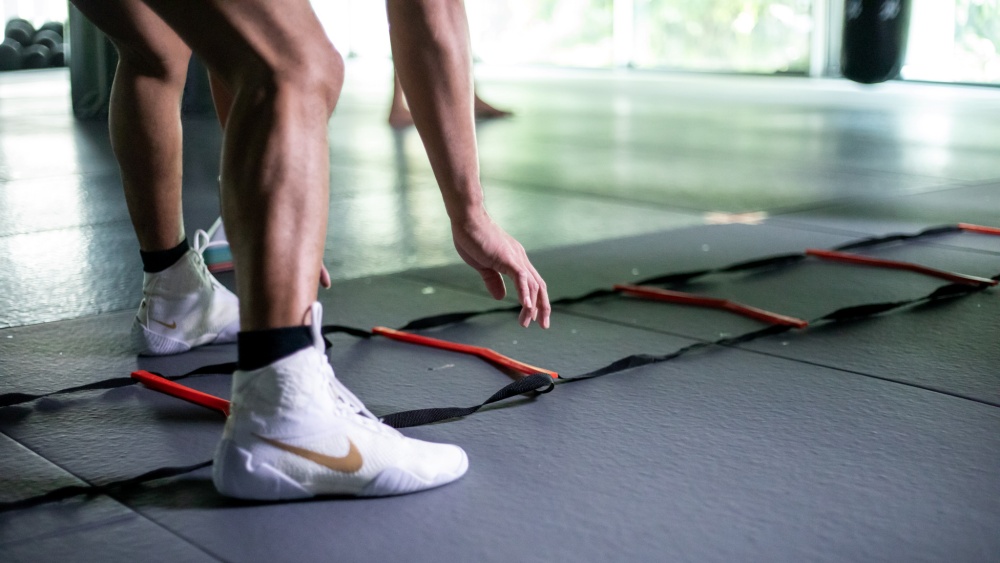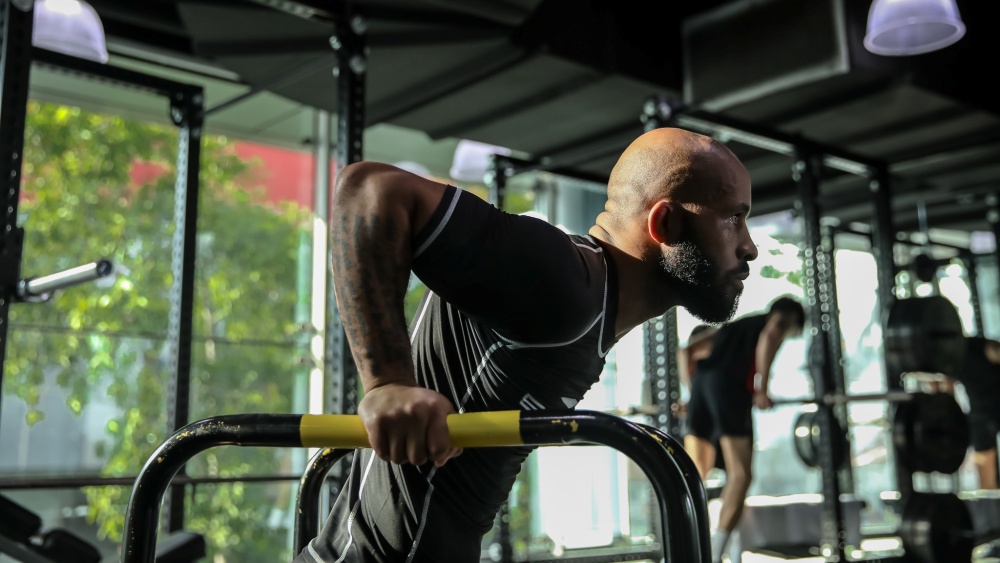An agility ladder is an affordable piece of workout equipment that can be used on virtually any flat surface like a lawn, the beach, living room floor, or gym floor. Some of the benefits of incorporating agility ladders into your workout routine include:
- It’s an effective way to improve and practice footwork
- It helps to warm up your body before an intense workout
- It improves your multi-planar and directional movement
- It gives you a fun and exciting way to improve your cardiovascular endurance and build up your calves
You don’t even have to purchase an agility ladder to enjoy these benefits. You can simply draw one on the floor you train on with chalk or tape.
Five Reasons To Consider Adding Agility Ladder Drills Into Your Workout Routine
This article will examine some of the benefits of training with an agility ladder so you can make an informed decision if you can benefit from using (or drawing) one:
1) Great Way To Warm Up For Your Workouts
Warming up before a workout has three purposes. It helps to improve your reaction time, warms up your ligaments and muscles, and raises your heart rate. Agility ladder drills help you accomplish these three things simultaneously in only a few minutes. It can also be more entertaining than many conventional warmups like jumping rope, cycling, or running a few laps before a workout.
Agility ladder drills give you the ultimate warmup without boring you or becoming monotonous. When working with an agility ladder, you can also build up other important attributes like explosive movement patterns, multi-planar stabilization, eccentric control, and proper landing mechanics.
2) Gives You An Effective Plyometric Workout
Plyometrics are an effective way to increase your explosive strength, mobility, and endurance. Many athletes incorporate plyometrics into their workouts. Examples of popular plyometric exercises include medicine ball throws, box jumps, and hang cleans.
Weightlifting explosively helps build functional strength, but about a third of each rep is spent decelerating the weight. Plyometrics allows you to skip the deceleration phase since your muscles only get benefits from the acceleration phase of your reps.
For example, when performing a bench press explosively, you slow down the bar as your reach the top. With plyometrics, you could throw a medicine ball off your chest without worrying about decelerating it. It allows you to get more out of each rep.
3) Prevents Injuries And Helps To Rehab Existing Injuries
Agility drill exercises effectively prepare your muscles for intense workouts, and they help with long-term injury prevention. This is because agility ladder drills allow you to target neglected and weak muscle groups like your lower back, deep abdominal, knee stabilization, and abductor muscles during your workouts. These muscle groups are often neglected since most exercises do not activate them enough. A good agility ladder workout can help fix the deficiencies in these areas.
4) Improves Footwork And Speed
Adding agility ladder exercises to your workout program helps to improve your speed, agility, quickness, and footwork. Your speed is your ability to move in a single direction as fast as possible, while your agility is your ability to decelerate, accelerate, or change directions.
Your quickness is your ability to change positions rapidly or react to someone else. Agility ladders force you to use your feet, body, and brain for each movement while precisely placing your feet in the proper rung. Anyone who partakes in sports where excellent footwork gives you an advantage, like football, basketball, or martial arts, should seriously consider adding ladder drills to their fitness routine
5) Fun Cardiovascular Workout
Agility ladder drills help improve your cardiovascular endurance, and it’s an effective way to burn lots of calories. Doctors recommend getting about 150 minutes of heart-pumping cardio each week to keep your body in optimal condition. Ladder drills give you a fun way to do that with endless variations, so your workouts never become monotonous.
You can also create a high-intensity interval training (HIIT) program with agility drills. This type of workout involves putting maximum effort into your exercises for a short time before taking a short break. HIIT workouts are more effective at burning fat than steady-state, lower-intensity cardio exercises. An hour of performing these exercises can burn up to a thousand calories.
Simple Agility Drill Exercises
Now that we have gone over some of the benefits of agility ladder drills, let’s take a look at some simple exercises you can add to your workouts right away:
1) Single Foot Agility Drill
You start this exercise at the base of an agility ladder laid before you. Start by practicing the movement carefully and slowly before increasing your intensity and speed. Make sure you maintain good posture throughout the exercise. Your knees should be slightly bent, and your shoulders relaxed over your hips. Drop your arms to your sides and move them naturally as you perform the exercise.
Here’s what this drill looks like:
- Step into the first square with your right foot by quickly placing it down and shifting your weight onto it
- Step into the second square with your left foot using the same mechanics
- Step your right foot into the third square, and your left foot into the fourth square
- Continue the sequence as you make your way through the ladder
2) Two-Foot Agility Drill
Just as is the case with the one-foot drill, you start this exercise at the base of an agility ladder. The movements are similar, but you move both feet into a square before advancing to the next one. Here’s what it looks like:
- Shift your weight onto your left foot while placing your right foot in the first square
- Shift your weight onto your right foot and place your left foot into the same square
- Shift your weight back to your right foot and repeat the motion as you move through the ladder
The key to getting the most out of this exercise is starting slow until you get the form down before increasing the speed you perform the drill with. Try not to let your heels touch the ground as you go through the ladder.
You may also like:
A Complete Resistance Band Workout That Will Level Up Your Conditioning


















